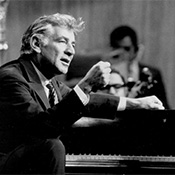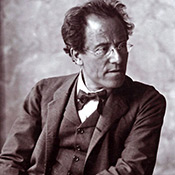
The Enduring Appeal of West Side Story
David Lewellen
PUBLISHED
Tagged Under: 2017.18 Season, Film with orchestra, Special Presentation
When the Milwaukee Symphony plays the soundtrack to West Side Story while the movie is projected on the big screen this weekend, audiences may concentrate on the landmark score by Leonard Bernstein. But the film, and the stage version that preceded it, have left imprints across wide swaths of American popular culture.
“It was electrifying for me as a young person when I first saw this movie,” said Tony Horne, associate professor of theater at UW-Milwaukee. “I couldn’t wait for it to come on TV every few years.”
The 1957 musical “elevated dance to equal participation with singing and acting,” Horne said. Jerome Robbins, with his ballet background and previous Broadway successes, brought “a sophisticated dance vocabulary we had not seen before. He took what we knew and turned it on its head.” It moved dance beyond the old chorus kick lines, and it paired well with Bernstein’s classical background.
Horne also credits Robbins with establishing the model of the creator-director-choreographer. It was originally Robbins’ idea to update Shakespeare’s Romeo and Juliet to a contemporary setting, and over the course of several years he enlisted Bernstein, the established playwright Arthur Laurents, and an unknown young lyricist named Stephen Sondheim.
And when the Hollywood version was produced, four years after the success of the Broadway musical, a similar constellation of talent got involved. “It was significant, in terms of how do we adapt something theatrical to the screen,” said Jocelyn Szczepaniak-Gillece, an assistant professor of film studies at UW-Milwaukee. Legendary graphic designer Saul Bass, who created the famous fire-escape logo for the movie, was also responsible for the opening montage, in which an abstract colored drawing dissolves into the skyline of Manhattan, followed by a shot of a single neighborhood, a single playground, and then the single figure of Riff, the leader of the Jets.
Just because the characters sing, any musical has already taken a step beyond realism, and the tight integration of dance in West Side Story moves further into artifice. Translating that to the movie screen is tricky. But “the dances were staged outside, in slums,” Horne said. “We had never seen anything like that.”
The choreography lives in its own semi-abstract world, and the movie’s use of Technicolor plays a similar role, according to Szczepaniak-Gillece, who specializes in film technology. “That thick, deep color is not necessarily associated with realism,” she said. “Especially when you translate a musical from stage to screen, it’s not supposed to be realistic.”
Aside from Bernstein’s score, Szczepaniak-Gillece said that one reason why the movie remains popular is its themes of race and class conflict. The picture, which won ten Academy Awards, represents a kind of bridge between the “sumptuous beauty” of old Hollywood productions and the contemporary engagement with politics and current issues, she suggests.
Reaching forward, she suggested that West Side Story helped make Baz Luhrmann’s 1996 version of Romeo and Juliet possible. And within the past few months, Steven Spielberg has officially announced he is working on a remake of the musical. But, Horne said, “I don’t believe it’ll work unless they go totally retro with it.”
But Horne sees similarities in the wide social impact of West Side Story and Hamilton. “Last summer I was in a store in Michigan, and I overheard five 13-year-old white girls debating Hamilton and talking about the lyrics,” he said. “Hamilton is in that line, using all the techniques we saw before. But what’s going to come after it?”
For West Side Story, “the appeal is going to be enduring, no matter how we change,” Horne said. “Young people are intrigued by its gutsiness and in-your-face attitude. I know I’m never going to be bored when I see it, onstage or film.”



